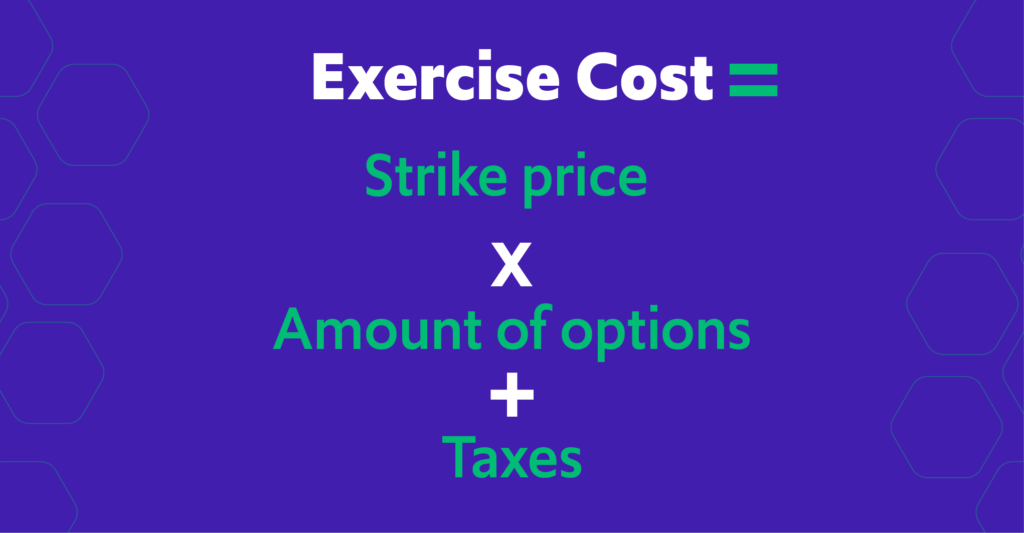
Congratulations! You’ve just started a new startup job. Employee stock options may be a big part of the compensation you were offered.
These options may one day help you pay off your student loans, buy a house, go on an amazing vacation or even retire early. But before you start dreaming about all these possibilities, it’s a good idea to understand the terms of your options, so you know how and when to exercise them when the time is right.
Your grant letter (or “Options Agreement”) has all the information you need, but the grant letter can be hard to make sense of because of all its fancy finance-y terms. Well, that’s exactly what we’re here for.
In this post, we’ll take a closer look at the grant letter and simplify the terms.
Here are the main things to look at in your grant letter:

The strike price is the price at which the options can be exercised (or purchased – turning them from options into actual shares).
This price is important because it gives you an idea of your total cost when exercising options in the future.

For example, if your strike price is $1 and you have a package of 50,000 options, the pre-tax cost to exercise your options will be $50,000. Keep in mind though, that to calculate your full exercise cost, you’ll first need to understand your tax cost. The information you’ll need in order to calculate your taxes when you decide to exercise:

The entire reason that startups (and other companies) give employees stock options is as an incentive to motivate and retain them. This is where the vesting mechanism comes in. Your options typically will vest over time, meaning the longer you are with your company the more vested options you will have.
In your grant letter, you’ll see what your vesting period or schedule is (usually, this would be several years). At the end of the vesting period, you will have vested in the full number of stock options. However, if you leave before the vesting period is over, that means you forfeit some of the options and will not be eligible for the full amount. But, you can still exercise any options that have already been vested.
The first part of the vesting period is known as the cliff. This means that you need to pass the cliff to “earn” the first part of your options. Once the first vesting period is over, you’ll receive a large chunk (normally 25%) of your stock options at once.

Let’s take a look at an example:
Suppose you have an annual vesting schedule of 1000 options with 25% of options vested each year after your first year of employment. After you’ve worked for one year, you will earn 25% of your options. To see the remaining vesting schedule, you’ll have to refer to your grant agreement. Typically, you will vest the remaining shares on a monthly basis over the remaining 36 months.
The last thing to find out is if your options are NSO or ISO. The main difference here boils down to how you will be taxed.
Incentive Stock Options (ISO) are subject to Alternative Minimum Tax. The AMT may or may not apply to you, and if it is – it wouldn’t be due until you file your tax return next year.Gains from Non-Qualified Stock Options (NSO) are taxed as ordinary income and are due at the time of exercise. Taxability on both types of options are determined by using the difference between your strike price and the company’s current Fair Market Value.
Are there any tax advantages to exercising NSOs early? It really depends.
We hope we have answered your questions on stock options.
If you want to know more, please feel free to ask us questions by commenting below and read our blog and guides.
Hopefully, you can start dreaming about your new car soon!